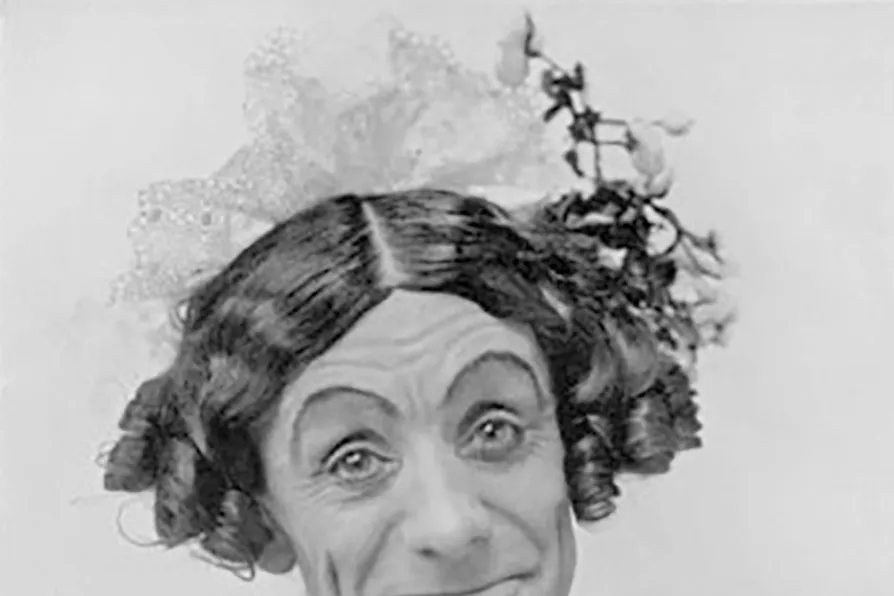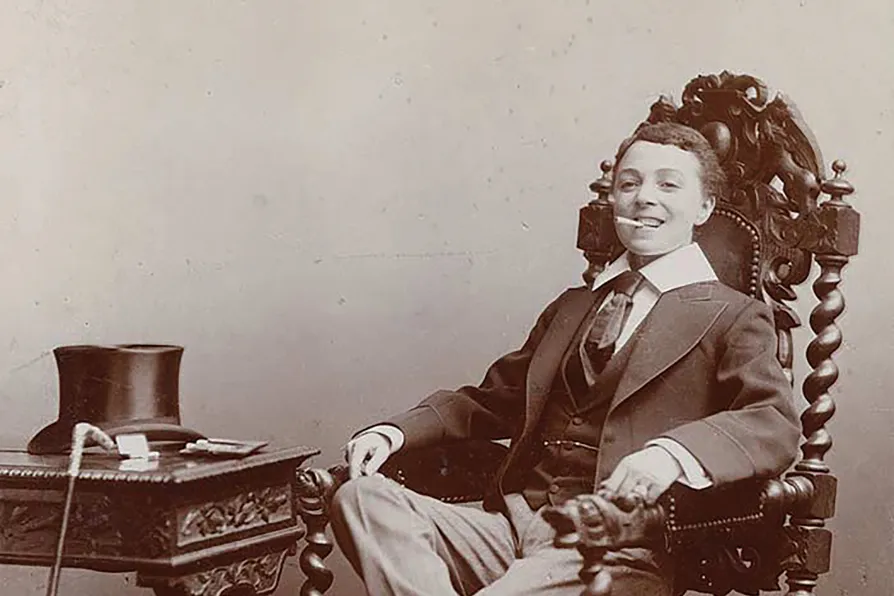JOE GILL speaks to the Palestinian students in Gaza whose testimony is collected in a remarkable anthology
Pantos have the power to confirm people’s prejudices or sub-consciously challenge homophobic and transphobic attitudes, suggests GEOFF BOTTOMS

 TOUR DE FORCE: Grayson Perry as Claire at Arnolfini, Bristol, October 2017 [Pic: Arnolfini/CC]
TOUR DE FORCE: Grayson Perry as Claire at Arnolfini, Bristol, October 2017 [Pic: Arnolfini/CC]
AT ITS heart pantomime is subversive. But before we get into the verbal boxing match of “Oh yes it is” and “Oh no it isn’t,” it’s worth exploring the origins of the genre.
Modern panto has its various roots in commedia dell’arte, the Regency era of clowning, led by the great Joseph Grimaldi, and more recently, music hall and variety.
Even Gilbert and Sullivan’s comic operas incorporated elements of pantomime with their topsy-turvy worlds, stock characters, magic and fantasy, and satirical and topical humour, although aimed at more middle-class audiences.
Theatre culture in this country can often seem elitist, raising questions of class, yet pantomime stands in opposition to that. It flourished in the Victorian era as entertainment for the new industrial working class, building on the success and popularity of the music hall.

In the late 19th century, when producer Augustus Harris saw how popular music hall was with the working classes, he started bringing in stars such as Dan Leno to his spectacular pantos at the Theatre Royal Drury Lane, in order to draw in wider audiences.
Panto became a more inclusive, noisy, family affair, with a man in drag centre stage, and adept in double entendres.
If pantomime has traditionally been an expression of gender subversion within folk culture, it has also adapted over the years to reflect contemporary social attitudes.
Although we no longer see women playing the part of a prince and slapping their well-exposed thighs for dramatic effect, the role of a dame played by a heavily made-up man, dressed in the most outrageous costumes, continues to reduce both children and adults alike to uncontrollable laughter.
Yet even here, more women are gradually being cast as the dame and drag performers are taking on other roles in shows.
Also the new breed of pantomime dames are more intent on making us laugh with their characters, rather than their negative stereotyping, which reflects a sensitivity towards members of the LGBTQ+ community, and especially trans people who are subjected to discrimination, hate crimes and media abuse.
Whether we mock or celebrate makes a difference, and with such large and lively audiences, pantos have the power to confirm people’s prejudices or subconsciously challenge homophobic and transphobic attitudes.
Of course theatre has always embraced cross-dressing. From the Romans playing women long before women were allowed to play themselves, to male impersonators such as Vesta Tilley, the highest-paid female performer of the music-hall era, gender has always been a subject of scrutiny, caricature and experimentation.

Shakespeare, in his plays, commonly uses cross-dressing as part of the plot where female characters disguise themselves as men to gain agency, move freely in a man’s world, and navigate situations otherwise denied to them. Which speaks more about the oppression of women in a class society than it does about gender identity as a social construct.
Pantomime with its cross-dressing traditions are part of that long tradition of carnival and subversion, when everything was turned upside down and people were able to mock their rulers, thereby creating anarchy.
Grayson Perry is an artist and a cross-dresser who makes the distinction between a drag queen, a panto dame, a transvestite and a transsexual.
For him, they are all related in that they all involve cross-dressing, which can create problems for those who want to be taken seriously in their opposite role rather than be seen as a comedic anarchic presence.
While Perry acknowledges this contradiction in a media interview some years ago, he argues that sometimes we need to be exposed to such things as panto dames: “As a dose of bad-taste medicine, which is what the traditional panto should be doing.”
For him it needs to be darker and more subversive, as that is its role, acting as a kind of safety valve. While accepting that parents want to take their children along into a sort of “sugary, primary-coloured world,” he thinks that panto “without that darker shade and the more subversive characters, would be losing its noble tradition and its purpose. It would become subversion-free.”
And isn’t that part of the role of the pantomime dame? A character who is genuinely outrageous and topical, satirising the socio-politics of the day.
From Dan Leno to Danny la Rue, Paul O’Grady, Christopher Biggins and Ian McKellen, panto has always attracted celebrities who were capable of success at the box office.
Yet, for this popular form of family entertainment to be true to its roots, its topsy-turvy way of looking at the world must remain subversive in holding up a mirror to the contradictions of contemporary society, so that we can laugh, not just at the ruling class, but the political leaders who serve its interests, and maybe even our socially constructed gendered selves.
Geoff Bottoms was a Catholic Stage Guild chaplain to the theatres in Blackpool for 30 years.










